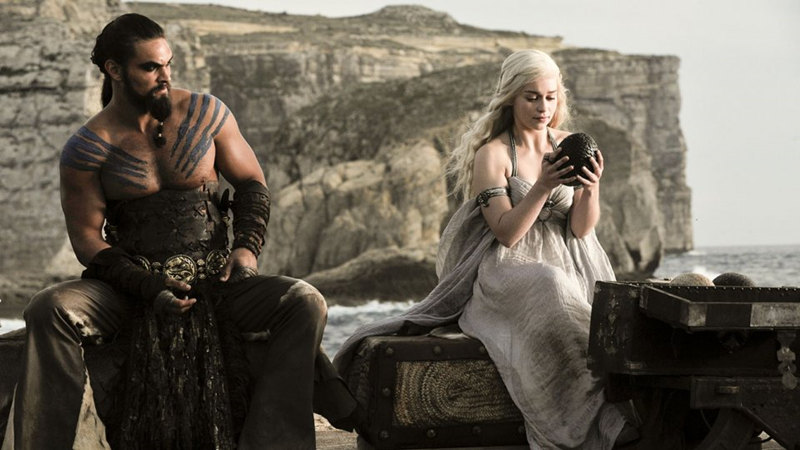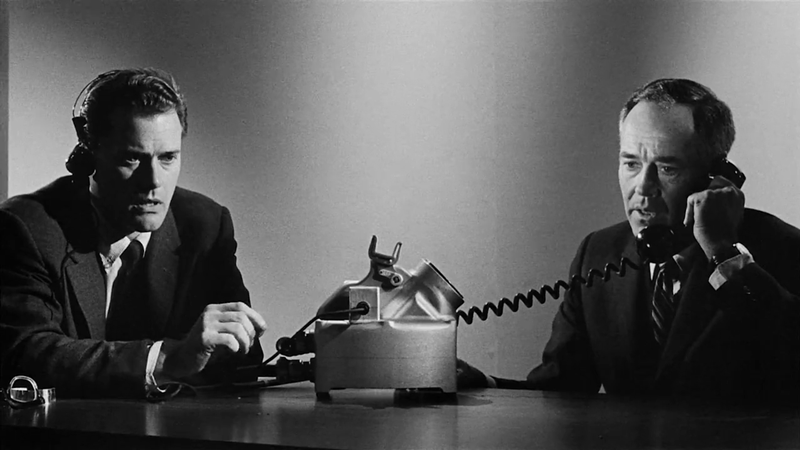In his DVD review, John J. Puccio remarked that he’s “always had the sneaking suspicion that people who like the music in ‘Hair’ are the very establishment types the film deplores.” Me, I had the opposite reaction. I thought that the people who go for “Hair” are the wannabe hippies, the generation that missed out on Flower Power, Free Love, and Vietnam War/Civil Rights protests and waxes nostalgic for a time they wish was theirs.
Either way, “Hair,” which came out in 1979–seven years after the Sixties technically ended—isn’t a realistic portrayal of the hippie lifestyle or the clashes they had with mainstream culture. It’s a stylized and romanticized musical that captures the irreverent spirit of hippiedom but none of the everyday details or logic. What scant plot there is revolves around Claude, an Oklahoma farm boy who goes to New York to report to the Army before being inducted in Nevada. Never mind that draft boards and induction centers were in every state, and never mind that California was the Mecca for Flower Children. But, as John says, it gives Claude (John Savage) a chance to meet a group of Central Park hippies led by Berger (Treat Williams) and to meet a rich “girl” named Sheila (Beverly D’Angelo, who looks more like one of those over-30 people the hippies didn’t trust). Naturally, a love-triangle develops, and conveniently, it also gives the “tribe” access to a rich family, so the hippies can “crash their pad” and continue to make their counterculture statements via song and dance. In fact, the only thing that these hippies do is smoke hash and sing and dance with all the precision of synchronized swimmers–which is tough, if not impossible to do, when you’re stoned. What happened to the anti-war protests? The peace marches?
If you’ve seen the Broadway version of “Hair,” you’ll notice the film version is markedly different, and not just because the plot was changed and director Milos Forman (“One Flew Over the Cuckoo’s Nest”) opted for high drama and a shock ending. Although D’Angelo strips to the waist a couple of times and there’s some skinny dipping and some Army examination-room antics, there’s no whole-cast nudity as there was in the stage production. Hey, it was 1979. That boat sailed.
But the film “Hair” is still narrated almost exclusively through song. There’s relatively little dialogue in this 121-minute movie. In addition to such well-known songs as “Good Morning Starshine,” “Easy to Be Hard,” “Flesh Failures (Let the Sunshine In),” “Aquarius,” and the title song, also included are “Sodomy,” “Donna,” “Colored Spade,” “Manchester, England,” “I’m Black,” “Ain’t Got No,” “I Got Life,” “Going Down,” “Old Fashioned Melody,” “Electric Blues,” “Where Do I Go?” “Black Boys,” “White Boys,” “Walking in Space,” “Initials,” and “Three-Five-Zero-Zero.” Omitted are “I Believe in Love,” “Air,” My Conviction,” “Don’t Put It Down,” “Frank Mills,” “Be-In,” “Yes, I’s Finished/Abie Baby,” “What a Piece of Work Is Man,” “The Bed,” and “Eyes Look Your Last.”
It’s the songs that make this film worth watching. Without them, it’s a pretty uneven narrative that can be awfully slow at times. Not that much happens, really, except for the “tribe” trying to convert Claude to their lifestyle and mindset, frolicking together, making a statement at Sheila’s parents’ banquet, and visiting Claude after he leaves for Nevada. I have to admit that, like John, I found the lead characters not nearly as compelling as ones from other musicals. They do a good job in their roles, but “Hair” feels more like an ensemble piece, partly, and none of the leads has the same kind of carry-a-show charisma as Liza Doolittle in “My Fair Lady,” Professor Harold Hill in “The Music Man, or Maria in “The Sound of Music.” It’s the music, and the Twyla Tharp choreography that’s responsible for the film’s energy.
Video:
Much of the film stock used in the Seventies hasn’t held up very well, but “Hair” looks pretty remarkable on Blu-ray. Presented in 1.85:1 aspect ratio, it features vivid-yet-natural colors once you get past the title sequence, and there’s a pleasingly slight layer of filmic grain. The AVC/MPEG-4 transfer to a 50GB disc looks to be a good one, with no visible artifacts and no over-scrubbing. The level of detail and 3-dimensionality is also quite good, with sufficient black levels to preserve detail in low-lit scenes.
Audio:
The audio is comparable, with an English DTS-HD MA 5.1 filling the room with song. It’s a dynamic track that makes full use of all 5.1 channels, especially on the big, full-cast numbers. Additional audio options are only Spanish, French, and Italian Mono, but there’s a full range of subtitles to make up for that. Besides, who wants to listen to a dubbed musical? Subtitles include English SDH, French, Spanish, German, Italian, Bulgarian, Croatian, Hungarian, Mandarin, Slovenian, Thai, and Turkish.
Extras:
There are no bonus features, unless you count the trailer . . . and I don’t. Curiously, there’s no main menu–the movie just starts playing, which is a bit unexpected for a title like this. A indie flick, perhaps, but “Hair”?
Bottom Line:
The film version of “Hair” has its problems, but there’s no arguing with the music and dance numbers–even if most of them ring about as “true” as those Elvis movies where the whole kitchen staff starts rocking out as the King performed in the dining area. Are they enough to compensate for the doldrums inflicted on us by a plot that defies logic and offers characters that never command our full attention? Yes, but . . . . And that’s the way this film strikes me.


